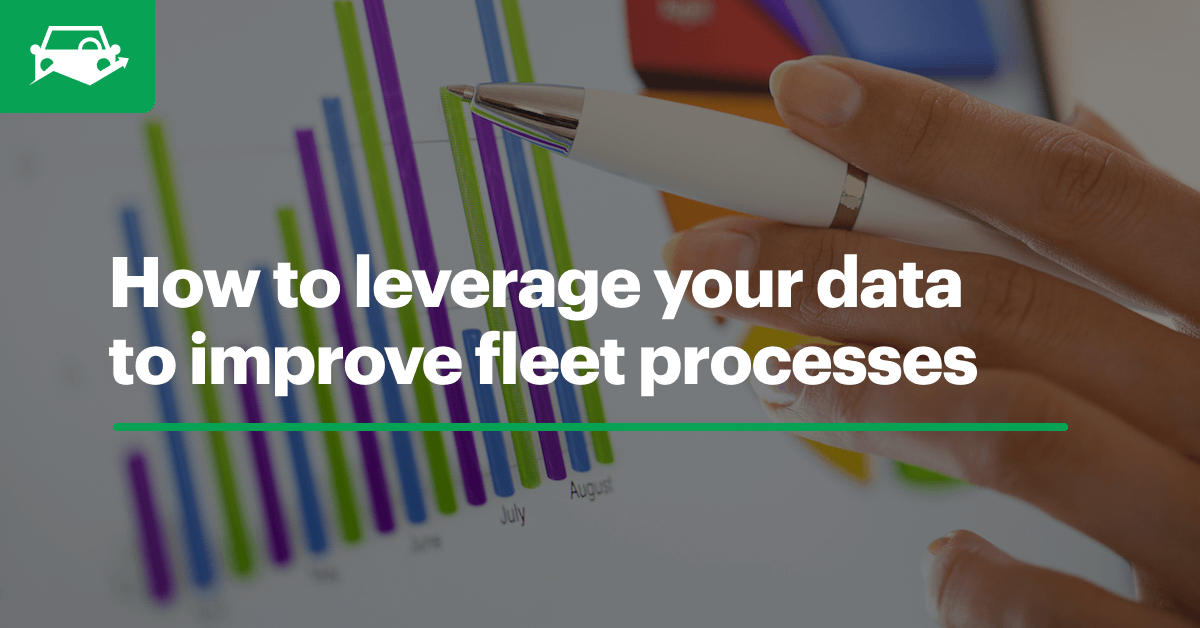Data itself is not valuable to your fleet unless it can be analyzed and interpreted correctly. In the first part of this two-part series, we discussed how to track fleet data. Now, we are diving into how to analyze and interpret your data.

Once you have a process for collecting data, it’s key to correctly draw insights from those metrics.
When you’re analyzing data, it’s important to:
Focus on actionable data
One common mistake fleet managers cite when analyzing fleet data is getting hung up on data that is not “actionable.” This is because some fleet metrics are not useful by themselves but instead require other metrics that show a complete picture of fleet performance. For example, annual fuel spend numbers alone provide enough information regarding fleet operations without considering related metrics like total miles driven annually, fleet size and vehicle mix.
Check data quality routinely
Your analysis is only as good as the collected data points. As you’re collecting data points, check that the records are being recorded correctly—no typos, repeated data records or data points intentionally altered by employees.
Analyze metrics in context
Your numbers don’t always tell the whole story. Sometimes there is more at play like unusual events or fleet variables which can affect your data results. Be sure to take note of unique outside events like storms and gas leaks during your analysis time period and context of your fleet like vehicle types you’re comparing, seasonality, etc. since these can affect results.
Benchmark fleet performance with peers
Comparing your fleet metrics with other fleets helps ensure you’re working towards the right data goals and achieving desired results. Without benchmarking your metrics, you could waste time going down the wrong path.
There are several avenues to access benchmarking data such as hiring a consultant or certain associations like the National Private Truck Council , which shares an annual benchmarking survey with its members.
Act on the data
Data collection takes time. Before you can even analyze data results, you must invest time recording and inputting data points and correcting for entry errors. If you don’t act on your data results, you’re wasting your time and potentially leaving money on the table.
For example, say your fleet tracks accident frequency and cost, noting how often there are fleet vehicle accidents and the associated expenses. If you don’t act on the data like implementing policies and trainings to prevent future accidents and monitoring the effect, you’re missing the opportunity to become a safer fleet and reduce fleet costs.
Robust datasets can be a beast to tackle. In order to assist you in the process, we have outlined how to interpret some major fleet metrics.
Interpreting Data
Cost/meter
Cost per meter essentially indicates a vehicle’s cost to your fleet. It is the total service and fuel cost for a vehicle over the miles driven (difference between current odometer reading and first odometer reading). This metric is helpful when determining which vehicle is the most economical to take for a certain trip or long route. You can compare vehicles’ cost per meter and choose to take the vehicle with the lowest cost.
You can also compare a vehicle’s cost per meter trend year over year to optimize vehicle replacement. If the value is increasing over time, it may be time to replace the vehicle with another vehicle that’s cheaper to operate.
Fuel economy
Compare your vehicles’ fuel economy to the standard to ensure your fleet is optimizing its fuel use . Fuel economy that is higher than expected can indicate poor driver behavior like harsh braking or acceleration or perhaps fuel theft. It could also indicate maintenance issues like dirty oxygen sensors, dirty spark plugs or misaligned tires.
You can avoid the headache of manually entering and calculating this data using fuel card integrations .
Issue tracking
Gaining insight into vehicle issue types and frequency is crucial. For one thing, if you notice a maintenance issue is happening repeatedly, there’s likely an underlying, preventable reason. For example, when one customer started using Fleetio, they noticed that one of their vehicles flew through four tires in just four months! Something other than typical vehicle wear and tear was coming into play there and a similar thing could be happening right under your nose too. There could be several reasons for repetitive maintenance issues including an aging vehicle, poor maintenance schedules or bad driver behavior.
Issue tracking highlights trends that help predict future repairs. This information is useful when forecasting fleet costs and creating fleet budgets.
Lifecycle cost or Total Cost of Ownership (TCO)
The Total Cost of Ownership shows trends in vehicle costs over time. Assets with increasing or high total costs should be considered for remarketing.
Accident frequency and cost
Tracking the frequency and cost of vehicle accidents enables you to determine average annual spend on accidents. This knowledge is applicable for budgeting and measuring the impact of safety initiatives like trainings or policies .
Asset utilization
Asset utilization is the percentage of vehicles in use during a 24 hour period. It provides insight into whether some of your assets are underutilized. You should aim for a 90 percent utilization rate otherwise you aren’t optimizing use of your fleet assets.
Parts and labor costs
Managing your parts and labor costs takes balance. Ideally, your parts and labor costs should be a 1:1 spending ratio. In other words, you should spend $1 on labor for every $1 spent on vehicle replacement parts.
We know this is a lot. Start small instead of trying to track all these metrics at once. Remember, when collecting and analyzing data, it’s quality over quantity.
Editor’s note: This blog post was originally posted in June 2017 and has been updated for accuracy and relevancy.
If you’re looking to get deeper insights into your fleet, Fleetio brings all of your fleet data into one place. Get a demo or start your free trial today!




